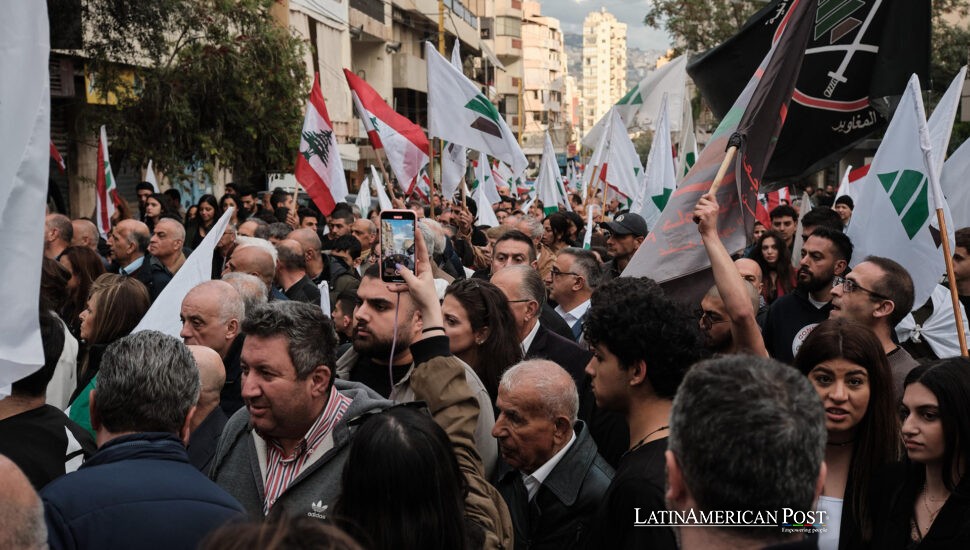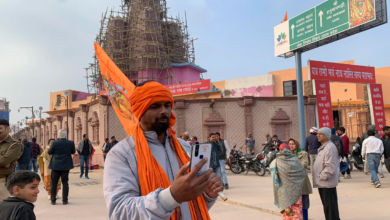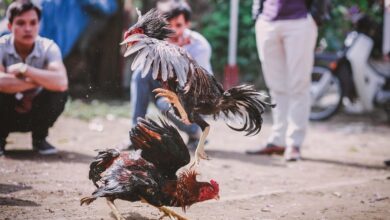Bridging Oceans: Conflict in Lebanon, Hope in Latin America

Fifty years since its civil war started Lebanon remains engaged with the same divisions that originally destroyed the nation. Lebanese-descended populations in Latin America maintain their ancestral connections to this conflict which demonstrates the lasting impacts of migration and cultural interactions.
Fifty Years On: Lebanon’s Turmoil Echoes in Latin America
It has been fifty years since Lebanon plunged into a civil war that would range from 1975 to 1990, leaving around 150,000 dead, nearly a million displaced, and the country’s social fabric shattered. Despite the official end of the conflict in 1990 with the Taif Agreement, many of the old fault lines remain. Sectarian divisions—split among Lebanon’s 18 officially recognized religious communities—continue to dominate national politics, and lingering rivalries among former warlords ensure that power remains in familiar hands. As recent events show, those same warlords (or their heirs) still steer the wheel of governance.
The flawed political system created during Lebanon’s independence in 1943 serves as the basic source of the nation’s complicated situation. The Taif Agreement, which followed the war, established a power-sharing system among Lebanon’s primary religious groups, including Christians, Sunnis, and Shiites, to address systemic injustices. Demographics have changed. Muslims represent the biggest religious segment, as there is no current census. But stability of power dynamics in Lebanon decreases when considerable changes put pressure on established power structures.
Current foreign interventions trigger extensive fear about possible new outbreaks of violence across Lebanon. The country’s location has made it a stage for regional actors—Israel, Syria, Iran, and Saudi Arabia—to jockey for influence. Even the United States has inserted itself from time to time, most recently to mediate between Lebanese leaders and to shape the political scene against Hizbulá, the one militia allowed to retain its weapons after the civil war. With over half of those polled in a recent survey expressing concern about a new civil war, Lebanon stands at yet another turning point. But as the country treads carefully to avoid renewed escalation, its diaspora communities—many in Latin America—stand as living witnesses to the broader historical and cultural tapestry forged during Lebanon’s years of upheaval.
“Turks” or “Moors”? Understanding the Immigrant Misnomers
Long before the Lebanese Civil War erupted, immigrants from the Ottoman Empire—particularly those from Mount Lebanon and regions that now form modern-day Syria—began arriving in Latin America in the late 19th century. They were known colloquially across much of the region as “Turcos” or “Turks,” largely because they carried Ottoman passports. Cuba was a notable exception, calling them “Moros” or “Moors,” thanks to its Spanish colonial heritage. Such labels frequently exasperated the newcomers, who were neither Turkish nor Moorish and who often adhered to Christian denominations such as the Maronite or Orthodox Churches.
Literature immortalizes this clash of identities. In Jorge Amado’s novel Gabriela, Clove and Cinnamon, the character Nacib —of Syrian heritage— expresses righteous indignation whenever he’s called a “Turk,” regarding it as a grave insult. The historical context of such resentment is significant: many of these Levantine immigrants had left the Ottoman Empire precisely because of economic hardship and political strife. This group of people, called Turks, did not consider the differences among them; they had distinct cultures, nationalities, and histories.
This movement of immigrants, sometimes called the “minor migrations,” increased the large diversity that already existed in Latin America. Alongside millions of Italians, Spaniards, and Portuguese who crossed the Atlantic between 1830 and 1930, Syrians and Lebanese flocked to countries like Argentina, Brazil, and Cuba. Estimating the exact numbers presents difficulties. Ottoman records possess limitations. Many immigrants arrived – they did not have official documents. However, historians estimate that hundreds of thousands of Arabic-speaking migrants made their way to Latin America by World War I. They initially landed in major port cities—Buenos Aires, Rio de Janeiro, Santos, and Havana—before spreading to smaller towns and rural areas.
In these new homelands, Levantine newcomers found unexpected parallels. Many aspects of Spanish or Portuguese culture bore traces of historical Arab influences dating back to the Moorish period on the Iberian Peninsula. Linguistic similarities, borrowed culinary traditions, and even architectural echoes helped ease the transition for some, although prejudice and misunderstandings still surfaced. Over time, the immigrants formed tight-knit communities, creating schools, mutual aid societies, and newspapers in Arabic or bilingual formats to maintain cultural ties and assist new arrivals.
Civil War, Diaspora, and the Fifty-Year Toll
The civil war started in Lebanon during 1975. Certain people left the country once more. These individuals went to live with family members in established diaspora communities. The conflict was complex from the start, encompassing Christian-Muslim rivalries, Palestinian armed groups, and interventions by Israel and Syria. Foreign occupations and battles shifted alliances in a war frequently dubbed “the war of others on Lebanese soil.” The economy became frail when that period concluded. Infrastructure faced destruction. Society experienced political paralysis.
Fifty years passed after the war began. Lebanon continues to confront several of those same separating troubles. Attempts occurred for political change. The confessional system exists deeply within the structure. It permits important families plus factions to govern main organizations. Public frustration boiled over in 2019 when mass protests demanded sweeping governmental changes and a nonsectarian approach. Though demonstrators briefly succeeded in toppling a prime minister, old power brokers found ways to reassert their influence, dampening hopes of systemic transformation.
Despite the grim picture, Lebanon has made incremental progress in forging some sense of unity. The new government plans to deal with the disputed topic of Hizbulá’s military power after a long period of political inactivity. This plan to choose only a national military approach shows work to form a self-governing country. This country should have no control by militias. Numerous formidable challenges stand in the way with primary concern being continuous external interference from neighboring nations dealing with their internal crises.
Lebanese diaspora individuals in Latin America face such difficulties. Some have relatives who left Lebanon before the war began. Others left the area during or after the conflict. Generations later, the ties remain strong, manifested in remittances, cultural exchange, and emotional support. While some diaspora descendants have fully integrated into Latin American societies, many still treasure connections to the “old country,” following Lebanese news outlets or traveling back to visit family and friends.
Forging Identity Across Oceans
One might ask: how did these centuries of migration and the half-century legacy of Lebanon’s civil war intersect in Latin America? The answer lies in both cultural continuity and adaptation. Levantine immigrants in Argentina, Brazil, Mexico, and elsewhere forged paths that began with door-to-door peddling of textiles, household goods, and religious trinkets, as famously depicted in the pages of authors like Gabriel García Márquez and B. Traven. From these humble beginnings, many moved into thriving commercial ventures, establishing shops and eventually expanding into import-export businesses, hotels, and even the political sphere.
Although they encountered prejudice or economic rivalry at times—exemplified by isolated episodes of anti-immigrant sentiment—the overall environment in Latin America was less hostile compared to other parts of the world at that time. Many “Turcos” found quick assimilation possible, especially since the majority were Christian and shared certain cultural affinities with Catholic-dominated societies. Over time, their surnames were often Hispanicized or Lusified by authorities who could neither pronounce nor spell the Arabic originals. Intermarriage between Arabs and local populations became increasingly common, particularly from the second generation onward. In countries such as Brazil, the proportion of Syrian-Lebanese men marrying Brazilian women soared above 50 percent by the mid-20th century, significantly higher than among some other immigrant groups.
Fast-forward to modern Latin America and the descendants of Lebanese and Syrian immigrants have achieved prominence in various arenas. In Argentina, Carlos Menem—of Syrian descent—served as president, while numerous politicians, entrepreneurs, and cultural icons throughout the region trace their lineage to the Levant. These examples highlight the merging of heritage. It is a dual identity. This identity recognizes its Middle Eastern beginnings. It includes a Latin American viewpoint.
This dual identity has influence outside commerce and government. The diaspora has sustained a vibrant network of social and cultural organizations, from the Sociedad Progreso Sirio in Cuba to the Sociedade Maronita de Beneficência in São Paulo, Brazil. Over time, these organizations began coordinating on a larger scale, culminating in Pan-American Arab congresses and umbrella associations that unite the communities across North and South America. Such institutions champion everything from Arabic language courses to the preservation of culinary traditions (e.g., kibbeh, tabbouleh, and other staples that have found local twists in Latin America). They also serve as resource hubs for families seeking to reconnect with distant relatives or investigate genealogical records.
Yet, these emotional and organizational ties to Lebanon face an inevitable test as new generations grow up further removed from the “old country.” For many, Lebanon is merely a distant land from which grandparents emigrated long ago. Periodic increases in violence or political turmoil throughout the Middle East trigger renewed interest in ancestral connections. During periods of instability, diaspora members organize financial aid efforts and demonstrate support for humanitarian causes while actively speaking out against threats to their family’s home nation.
Now, at the 50-year mark since the outbreak of Lebanon’s civil war, the dual experience of diaspora engagement and local assimilation stands at an important crossroads. Even as the second and third generations find fewer direct connections to the Middle East, the sense of belonging remains potent, reinforced by organized events such as cultural festivals, heritage tours, or philanthropic missions. Memories of the war passed down through stories, diaries, or archival footage also serve as a reminder of why so many departed Lebanon in the first place. For those who arrived during the war or soon after, the current anniversary amplifies reflections on the peace that Lebanon has yet to fully secure.
Straddling Two Worlds, Looking Forward
Despite five decades having passed since Lebanon’s civil war began, the country remains in an unsettled state. The nation faces ongoing structural and sectarian obstacles while foreign interference continues to pose a danger. Lebanese people living both domestically and internationally have cultivated resilience by remaining persistent and adapting their culture while building supportive transnational networks. Lebanese-descended families in São Paulo, Buenos Aires, and Havana maintain their cultural celebrations, which demonstrate that migration encompasses both departure from one place and connection building in another.
The experience of Latin America with Levantine immigration represents the universal human experiences of diaspora movements and identity formation. Lebanon’s troubles cause effects. These effects travel from Beirut’s demonstrations to the busy markets of São Paulo. This connects individual accounts of survival to widespread desires for opportunity also goals held in common. Whether in literature, politics, or the culinary realm, the Levantine imprint on Latin America endures—much as the determination of those who endured 15 years of civil war and the half-century ripple effect it has cast.
At this 50-year juncture, many Lebanese—both in their ancestral homeland and across the vast reaches of Latin America—yearn for a more decisive break from the conflict’s long shadow. They aspire to a Lebanon free from sectarian rifts, foreign meddling, and the wartime vestiges that still puncture daily life. In parallel, they celebrate the cultural synthesis that has emerged on the other side of the Atlantic, where Arabic words mingle with Spanish and Portuguese, Levantine spices season local staples, and centuries of shared stories infuse each new generation with a rich heritage.
Also Read: Mexico’s High-Stakes Water Pact with Washington
Lebanon’s 50-year mark shows wars change societies completely. These wars leave legacies that move with refugees plus adventurers. The Latin American story of individuals once known as “Turks” reveals how relocation transforms into lively new identities. It builds a mixture of common experiences. The present world struggles with its own disputes and movements. Because of this, the lessons from Lebanon’s civil war and the strong endurance of its diaspora are still important.





